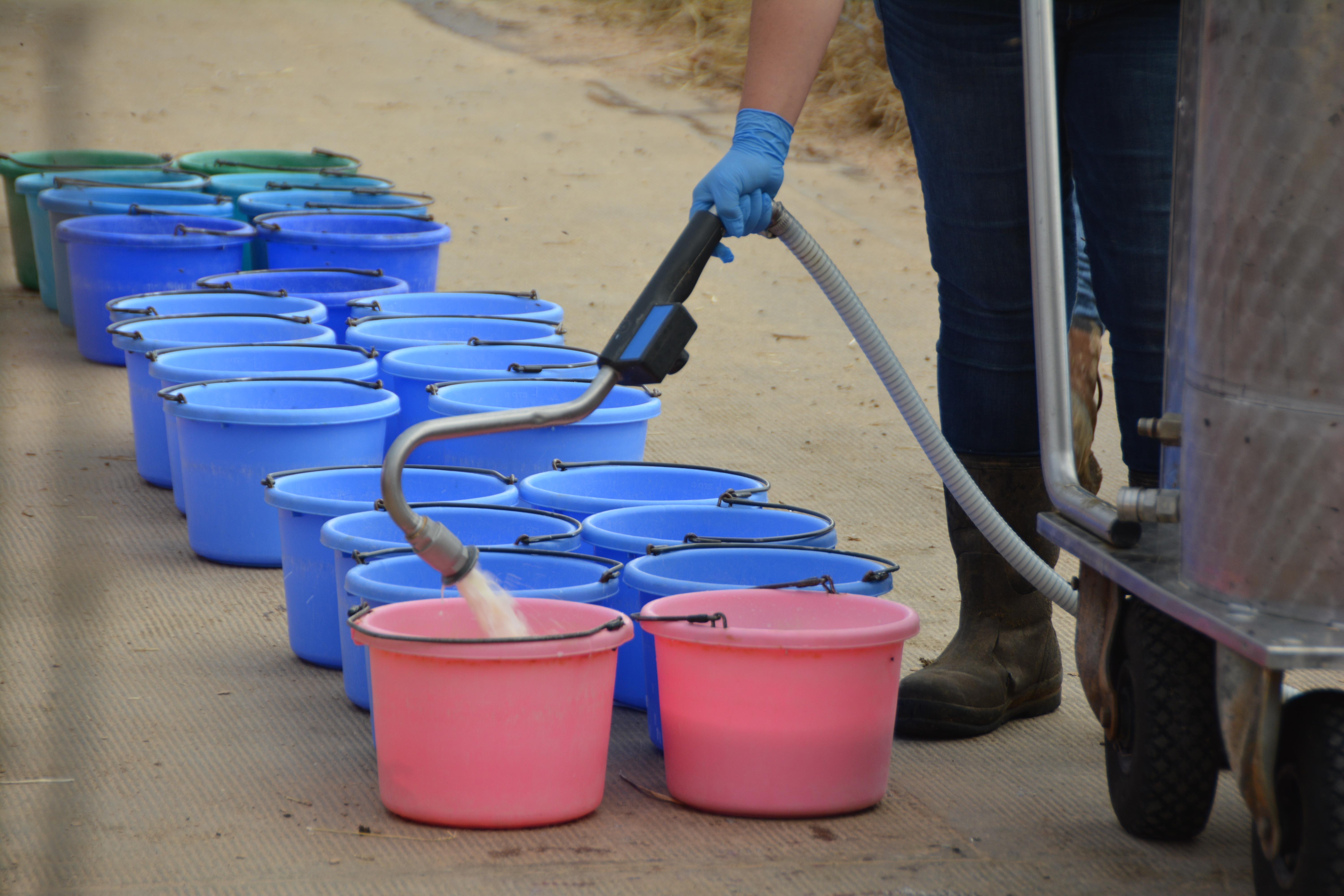Management Important for Achieving a 45,000 lbs. Average Herd Production
Management Important for Achieving a 45,000 lbs. Average Herd Production
As our understanding on how to feed and manage dairy cows improves, milk production per cow continues to increase. Just look at the last two national record holders for milk production. The most recent national record holder, Selz-Praille Aftershock 3918, produced 78,107 lbs milk in a 365-day lactation. The previous record holder, Ever-green View My Gold, produced 77,480 lbs milk, just 627 lbs less than the current record holder. Both of these cows are housed within herds that can get cows to milk.
During a fall KY Dairy Development tour to Wisconsin, we had the honor to visit the herd which includes My Gold, the previous production record holder. I was excited to see this herd of cows and learn from their owners how they achieve this production. This herd consisted of 94 cows averaging 45,290 lbs milk at 3.8% butterfat and 3.1% protein. Cows were housed in a tie stall barn built in 1938. Approximately 50% of the herd was 2-year olds. Just inside the door of the barn were 3 cows in a row which averaged over 60,000 lbs of milk. I realize that this herd sells many embryos and cows to neighboring farms, but they still get cows that remain in the herd to milk well. From my observations and listening to the farmers’ discussions, I gleaned 3 management philosophies that I believe had a positive impact on My Gold and her herdmates’ outstanding production.
Management Philosophy #1: “Calves are the most important group on this farm.”
Calves represent the next generation and management practices during the first two months of life directly and indirectly influence future milk production. Newborn calves were fed 4 quarts of colostrum within a half hour of birth and calves were warmed using heat lamps when necessary. Calves were housed individually and fed pasteurized whole milk using buckets, calf starter and water. The amount of milk was increased after the first 4 weeks of life from 2 quarts to 3 quarts fed twice daily. Calf pens were cleaned out when calves were 3 weeks of age and again when the calf left the calf barn.
Attention to detail and ensuring consistency in feeding practices was very evident during our tour of the calf barn. The amount of milk fed each calf was measured using a metering device to ensure a consistent amount was being fed. Calves were definitely fed on schedule. The owner indicated that calves were going to be fed at 4 PM and 12 minutes before feeding time, the calf employee was taking the pasteurized milk to the calf barn so that the calves would be fed on time.

Management Philosophy #2: “Nothing goes into the silo that is not perfect.”
Harvesting the highest quality forages was extremely important to these owners. High quality forages are more digestible and allow cows to eat more feed, resulting in more nutrients for cows to turn into milk. Forages were harvested at only the proper stage of maturity with nothing “too old or too young” harvested. Corn silage was high chopped (chopped at waist height) to increase the starch content of the preserved feed with a moisture content of less than 60% at ensiling. Brown midrib varieties of corn for silage were harvested. BMR varieties are more digestible than conventional varieties. Mr. Kestell stated they ran out of BMR corn silage last year but that would not happen again this year.
Management Philosophy #3: “It’s not what you do right, but what you do not do wrong. Do not insult the cows.”
Throughout our tour, attention to detail and consistency for all aspects of management were very evident. Cows were fed approximately 65 lbs of dry matter with cows averaging about 2 lbs of milk for every pound of dry matter consumed. Cows were fed a one group TMR in the tie stall barn containing 4 lbs of alfalfa baleage, corn silage, high moisture corn, and additional grain mix with the top cows’ ration topdressed with roasted soybeans. From year to year, the ration is tweaked to adjust for changing nutrient composition of the forages but no major changes are made. Consistency of feed delivery and implementation of management programs was very evident not only at the level of management but also employees caring for the cows and heifers. These owners had found management practices which worked for them and they followed them consistently.
How does Ever-Green-View Dairy get cows to set milk records?
The key management practices we observed included harvesting and feeding high quality forages to cows with the genetics to milk. Cows were treated “like queens” starting at birth and throughout their stay on this farm. This farm definitely made the best use of their facilities with the tie stall barn definitely showed its vintage. But, they made it work for their operation. For example, fans were used to move air in the summer. Attention to management details, consistency of executing management practices, and investigating when changes occur in production or quality expectations were important philosophies throughout all ages of calves, heifers, and cows. For example, one farmer asked what his somatic cell count averaged. The owner’s answer: “100,000 or lower, however yesterday it was 130,000 and we need to look for the ‘problem cow’”. So, the question becomes, can you have the next record producing herd? The answer is yes but you need to remember and follow these 3 underlying key management philosophies.
Author: Donna M. Amaral-Phillips
